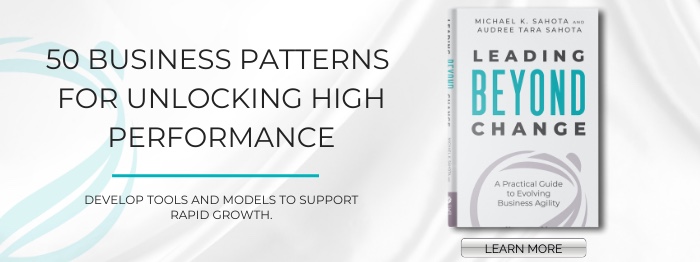Scrum roles are easy to understand. The challenge is how to move from theory to practice to unlock success. In this article, we’ll uncover the dirty truth and share secrets to excel in all the Scrum roles.
What Is Scrum?
Scrum is a powerful technology to invite organizational transformation that will amplify new ways of working. It’s a very lightweight process framework. It can also be understood as a powerful disruptor of the hierarchy and a way to create high-performance teams. Scrum is a team-centered technology.
The core foundation of Scrum is that there are three roles.
- The Product Owner is usually defined as the person who decides what will be worked on
- The Development Team or the Delivery Team, which is responsible for actually getting work done, creating the product, creating things that will serve the customer
- The Scrum Master. They are supposed to look at the whole system, the whole team as a system, and help it become better.
The product could be anything, it doesn’t even have to involve software. It’s just really talking about any group of people coming together as a team to work together to create a product, project, or organization.

Scrum Roles and the Reality Gap
There is a fictional idea of what Scrum should look like, and then there is reality. The Scrum Reality Gap is the gap between what is supposed to be like and what is really happening. This reality gap describes how Scrum is misunderstood, misused, or distorted in most organizational systems.
Most people on Scrum teams are experiencing the gap, though the intensity varies from organization to organization. Regardless of whether you’re coming from a pure Scrum context or some variation of Scrum. Maybe you have only begun to implement Scrum or you are thinking about it. Maybe you’re getting some benefits from Scrum, or it’s possible it feels like the way has been totally lost. We have some tips that will help improve your Scrum game and start getting the benefits that are promised from Scrum.
Below, we describe each Scrum role, its challenges, and what we can do about them.
Scrum Role #1: Product Owner
The key idea with Scrum is to create coherence and alignment around what we’re trying to build and what kind of outcomes we’re trying to create for our organizational system. The Scrum way of handling the problem of creating alignment is to establish a role called the Product Owner. The role of the Product Owner is to guide the building of the product.

This is a great idea: having one person gathering all the information and input, bringing it together, distilling it down to the essence, and then guiding the team on what needs to get built. It’s a really great concept, but here’s where things go wrong.
The Reality Gap
What can go wrong is when Product Owners do not take an integrated look at the whole system. They’re only looking at the market perspective or the delivery timeline perspective and they forget about other perspectives, like the team perspective or the sustainable product perspective.
A Product Owner can create an amazing product that will stand the test of time, or they can hit a delivery date, get their bonus, and create a product that’s so challenged and riddled with problems that it’ll create a nightmare for years and even decades to come.
There’s nothing to support a Product Owner in making good decisions. Oftentimes we put Product Owners in environments where they’re encouraged to make bad decisions. Their bonuses are tied to a release date, not the quality of the product delivered, the code quality, or the usability.
Other challenges that come up with this Scrum Role are that the Product Owner does not have their ego under control. They think they get to decide, and they’re going to get the team to do what they think is important.

The subtle issues and undercurrents of a Product Owner role are never addressed in training or in the workplace.
The Solution: Learn to Take Advice to Serve All Stakeholders
Interestingly, all of these challenges boil down to one solution that addresses the root challenge. The secret to great Product Owners is that they use a technology called the Advice Process to listen to the people around them to make the best decisions. They see themselves more as a steward of the decision, rather than the king who gets to decide everything.
As stewards of decision-making, good Product Owners will make the best decision for the organization. To do this, they will:
- Balance all the different stakeholder views
- Make necessary trade-offs
- Be clear about what those trade-offs are
- Get feedback on the quality of their decisions from those around them, including the team or those impacted by the decisions
Actually making the shift to really listen requires getting one’s ego under control. To learn to use the power of the role in service of the team and organization. This requires navigating what we call “The Paradox of Power”, which we have dedicated a whole chapter to in our book, Leading Beyond Change.

Scrum Role #2: The Delivery Team
The second Scrum role includes multiple people. The delivery team is anybody involved with getting the actual work done. It’s really important here to look at the word “team.” What does it mean to be a team? Effective teams are usually five to seven people. Any more than that and the fabric of a team starts to disintegrate, because there are too many people involved. There’s a famous rule from Luke Holman, “More than eight, no collaborate.”
The Reality Gap
Where do things go wrong with the Delivery Team? We have another article that delves even more deeply into this, called Scrum Anti-Patterns, but here are the most important points.

Mindset
The biggest challenge with the Delivery Team Scrum role is that people don’t make the shift from “I” to “We.” People still think in terms of separate roles. “The development tasks are mine to do, the QA people do the QA tasks, these are the business analyst’s tasks…”
When team members are unwilling to lose their identity as a particular sub-role and move out to the broader view of being a team member, this causes stagnation. Successful teams work together and will step up to do whatever they need to do to make the team successful. We speak to Theory X vs Theory Y, where everyone shows up as adults and are engaged and motivated no matter what is happening around them.
It is important for people to develop what we call an Agile Mindset to actually realize the benefits of the scrum team. Otherwise, this delivery team concept doesn’t really work. Having this mindset shift is essential for unlocking high-performance.
The Messy Kitchen
The next reality gap is that teams are pushing hard to do a quality job while upper management is pushing for speed. Leadership doesn’t understand that quality is essential to be successful now and in the future.

The delivery team knows they’re responsible for the long-term health of the product, the quality of the code, the quality of the documentation, and the maintainability of this product. They also know that their product will be involved in future releases. They have a vested interest in making sure that the code is built in a quality way.
Unfortunately, most organizational leaders focus the majority of their energy on immediate results, and there’s only lip service paid to create healthy, sustainable products. This creates tension with the team delivering the product.
Especially in software, most teams work in a context where there’s technical debt – often referred to as a “messy kitchen.” It’s unpleasant and messy to work in a codebase where there’s such a big mess. Oftentimes, people have done all this extra work to clean up the code or the build system. They come in after-hours or sneak in time just to keep things running.
The Solution
Often, teams struggle with how to address the time pressure that compromises the ability to do quality work. Ultimately, this is the responsibility of the Product Owner since they are deciding what gets worked on. Good POs (and this is part of Scrum) ensure that there is time to do quality work to create a sustainable product.

It’s important for teams to have shared accountability or responsibility for success. Evaluating people together as a delivery team, independent of their roles, is a very powerful way to increase overall performance. High-performance teams have leaders at all levels, it is the responsibility of leadership to create this. Product Owners and Scrum Masters are the leaders of an Agile organization, and leadership skills are important for these roles.
What this does is it tells people, “It’s in your best interest to help the people around you, because you’re all going to succeed together or fail together.” It creates this really powerful context to encourage less egocentric behaviors and support more collaborative behaviors that look towards the health of the whole system.
And that subtle shift from “I” to “We”, is the primary reason that Scrum works so well. It works because it creates a mental frameshift to a more evolved way of working – a more evolved understanding of how to create success. This new way of working is accomplished with a more evolved consciousness. A different world view and perspective where everyone works and collaborates together, with leadership at all levels to create high performance.
Scrum Role #3: The Scrum Master
A core part of Agile is understanding that learning over time will be crucial for the team to perform better. We wrote another article on Agile as a learning culture that talks about this.

Scrum handles this need for learning in two ways. One is to have an approach called the retrospective after each sprint or every iteration. The other one is to create a Scrum role called the Scrum Master. Ultimately, the Scrum Master’s job is to be responsible for the evolution of the team’s production capability over time. The Scrum Master’s role is to guide teams to be at their highest levels of performance.
In theory, the Scrum Master acts as a coach. They are not there to get any work done, they’re supposed to focus only on developing the long-term production capacity of the team. They work with teams in ways that can lead to more productive outcomes, remove impediments, work with resistance, guiding and leading the teams to success.
The Reality Gap
There are four main parts to the Reality Gap for the Scrum Master role.
The Scrum Master doesn’t have the time to do their job

When addressing the development team, we spoke about how most organizations don’t actually value long-term productivity. The Scrum Master’s job is to increase the long-term productivity of the team, yet within the environment of most organizations, there isn’t really time for that.
If there’s too much going on, the Scrum Master can’t do their job. What happens is that the Scrum Master can only make surface efforts. Sure, they may begrudgingly have their one-hour retrospective every week or every two weeks, and there might be some improvements that come out of that, yet it’s really only scratching the surface of what’s possible.

The Scrum Master has not evolved out of command and control
The next part of the Scrum Reality Gap is that Scrum Masters have not been trained to evolve beyond a command and control mindset. Scrum masters are leaders, yet they have not been trained in the skills or the mindset needed to create a shift to what Scrum is pointing to – which is a more evolved culture system, a much more evolved way of functioning and working.
We call this the blind leading the blind. Most Scrum Masters are unqualified because they have not had the mindset shift needed to lead teams to a more evolved way of working. It’s not anyone’s fault – the mindset shift was not part of Scrum training. However, we’ve discovered this to be the #1 reason Agile has failed organizations.

Scrum was created to shift the culture of an organization to a more evolved way of working. Scrum is not business as usual, so most organizations have a challenging time integrating Scrum or any Agile way of working into the structures of traditional ways of business.
Scrum is not business as usual
To create high performance, the old or traditional ways of working – business as usual – will not work. Most humans on this planet have been raised to lead from a place of command and control, this is the traditional way of doing business. In traditional organizations, the manager is unable to run an effective team because command and control doesn’t work to create high performance. Typical organizational management styles are confronted with low engagement, resistance, and low productivity. Yet managers are oblivious to why this is happening.
Unless Scrum Masters have the support to develop an Agile Mindset to be an Agile Leader, they will not be able to embody what Scrum is really all about. Scrum Masters need specific leadership training to achieve the high performance of their Scrum Teams and deliver the benefits promised from Scrum. We call this Evolutionary Leadership; lead through an evolved mindset, leadership through influence, leading without command and control to create high-performance organizations.

Scrum Masters don’t understand how to navigate the ecosystem
Scrum creates a completely different power structure. The Scrum Master needs to be able to navigate the fact that there are two totally different power structures, their Scrum teams, and the larger organization. Most Scrum Masters are totally unaware of this. Or if they are, they incorrectly assume that the Scrum structure is dominant.
Most Scrum masters don’t understand the larger ecosystem that they’re playing in, and how to create the best path for Scrum, and the best path for their team, in a larger organizational context. Scrum masters are constantly in conflict about where the power and control actually is. People are trying to do Scrum in situations where it doesn’t work because there is a larger organizational cultural gap.
This is what we teach in our Certified Agile Leadership training: how to work with the existing organizational culture. How to create the art of the possible without power, without authority, without budget. Whether you are a manager trying to understand how to make Agile work, a Scrum Master, or an Agile Coach, it’s the same process to create success.
The Solution
While these Scrum Master Reality Gaps may seem daunting at first, there are simple ways to focus time and attention to start making progress. It’s a journey, so just focus on the next step.

#1 Listen to the system
The number one tip is to listen to what the management and other stakeholders are asking for. We call this listening to the system. This is about noticing, what does a win look like for all the different stakeholders? What does it look like for the managers, the product folks, the delivery line folks, the senior management, and the team?
As a Scrum Master, you can listen to all the stakeholders to understand how to balance the differing needs and desires, create alignment, and go for as much of a shared win as possible.
It is also important to listen to your teams. What does it feel like for the teams to be required to become Agile? How are they integrating Scrum into the required work? Are they engaged and motivated? What is their personal “Why” for their team and the organization? By listening to the teams and letting go of command and control behaviors, you begin to lead through influence and your teams become higher-performing.
#2 Recognize “invisible fences”
Another more subtle form of listening to the system is to know the “invisible fences”. A Scrum Master must know what decisions can be made by the team and what decisions are actually made by other governing bodies within the organization. Oftentimes Scrum teams feel they are autonomous when they are not. Optimizing locally does not make room for optimizing globally. Scrum teams must know they are part of a larger ecosystem and are working for the good of the organizational purpose. Scrum Masters must know the art of leading Scrum teams to work within the system and create relationships with the whole organization.

#3 Stop fighting
Number three is to stop fighting. I’m going to repeat, stop fighting. Any place where you’re giving in to fighting or conflict, you’re not helping yourself or the organizational system be successful. All Scrum roles require genuine collaboration and psychological safety to truly be effective.
Look for where you have frustration or resistance to people and or the organization, how are you helping or blocking the system? Understand that your frustration or resistance creates damage to the whole system. Look for behaviors where you isolate your teams and where your teams are not collaborating with other teams. There are behaviors where teams compete, this is not “Agile ways” of working. Look for how you can help other teams be successful. A Scrum Master’s role can become powerful when you understand that you are there to help others be successful.
#4 Focus on your own growth and evolution
Focus on your own growth and evolution. You can not change anyone on the team. You can not change the organizational system. You can only work on how you’re showing up. However, if you work on yourself to more powerfully embody the Agile Mindset and Agile way of being, then your team will be more agile that day, that week, guaranteed.

Bonus: Make your boss look good
Scrum and Agile are there to serve organizational goals. Pay really close attention to how you can create success for your organization and its goals – that’s what you’re really being measured on. Even more importantly, pay attention to how you can make your boss look good.
Final Thoughts
It’s totally normal to fall into the Scrum Reality Gap. If you follow what we’ve outlined here, you’ll be fine. Step one, become aware of the gap; step two, start moving towards the resolution of these tensions in the system.
This article is inviting you to become more aware of the broader scope of what’s being undertaken with introducing Scrum. It’s not just a simple process framework, it’s a shift to a different way of working and a different way of being. Whether you call it the culture shift, a shift in consciousness, or just creating high performance, this is the deeper journey that Scrum is secretly pointing to.
Enjoy the journey!
If you’re interested in learning more, these resources offer a deeper dive:



